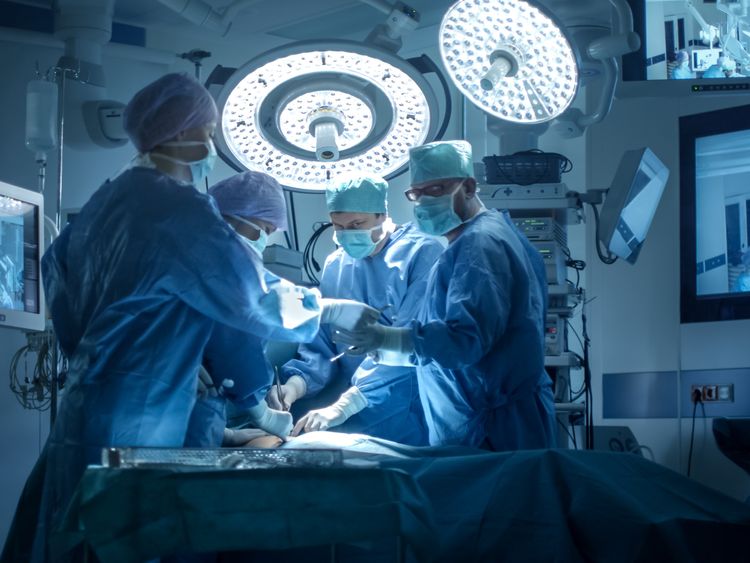A mother has given birth to a healthy baby girl after surgeons implanted a womb in her body from a deceased donor.
Published in The Lancet, the case study in Brazil demonstrates that uterus donations from deceased donors are a potential avenue of treatment for women with uterine infertility.
Although uterus transplants are a growing area of medicine, they remain highly experimental and are very difficult surgeries to complete.
Uterine transplants from living donors have occurred before. A total of 39 transplants have resulted in 11 live births – with the first taking place in Sweden in 2013.
There have been 10 uterus transplants from deceased donors attempted in the US, the Czech Republic, and Turkey, but this is the first one which resulted in a live birth.
The surgery described in the case study took place in September 2016, and notes that a 32-year-old woman who had been born without a uterus was the recipient of the transplant.
This woman had a single in-vitro fertilisation (IVF) cycle four months before the transplant took place, which resulted in eight fertilised eggs which were cryopreserved.
The donor was a 45-year-old woman who died of subarachnoid haemorrhage – a type of stroke involving bleeding on the surface of the brain.
In a surgery lasting 10.5 hours, the uterus was removed from the donor and transplanted into the recipient, where it was connected to the recipient's veins and arteries as well as her ligaments and vaginal canals.
She stayed in intensive care for two days after the surgery and then spent six more on a specialised transplant ward.

The woman received five immunosuppression drugs, as well as antimicrobials, anti-blood clotting treatment and aspirin while in hospital, and immunosuppression was continued up until the woman gave birth.
Five months after the transplant, the uterus showed no signs of rejection and the recipient was menstruating regularly.
Her fertilised eggs were implanted after seven months – and 10 days after implantation, the recipient was confirmed to be pregnant.
Ultrasound scans at 12 and 20 weeks revealed no foetal anomalies.
Her baby girl was born via caesarean section at 35 weeks and three days, weighing 2.5kg (about 6lbs) and the transplanted uterus was removed during the caesarean section and showed no anomalies.
In a linked comment published alongside the paper, Dr Antonio Pellicer of Rome noted that although the procedure was a breakthrough, it was still in its very early stages.
He said: "All in all, the research to be done in this field (whether from alive or deceased donors) should maximise the live birth rate, minimise the risks for the patients involved in the procedures (donor, recipient, and unborn child), and increase the availability of organs.
"With the expansion of the field, the number of procedures will increase, and this will allow the community to set different types of study designs, such as comparison studies (ideally randomised) or long prospective series.
"In an expanding field such as uterus transplantation, the role of collaborative networks and societies such as the International Society of Uterus Transplantation or new interest groups in already existing scientific societies will be crucial.
More from Brazil
"They should promote education and guidance so that the groups performing uterus transplantation for the first time can benefit from the experience of the pioneers.
"They should also encourage forthcoming procedures to be done and reported in a transparent way by endorsing prospective registration of the procedures and by developing accurate registries."
[contf] [contfnew] 
Sky News
[contfnewc] [contfnewc]






